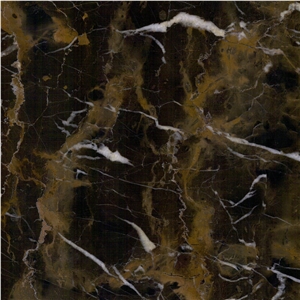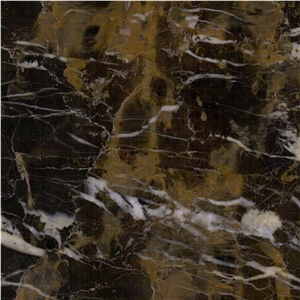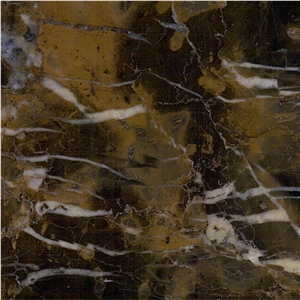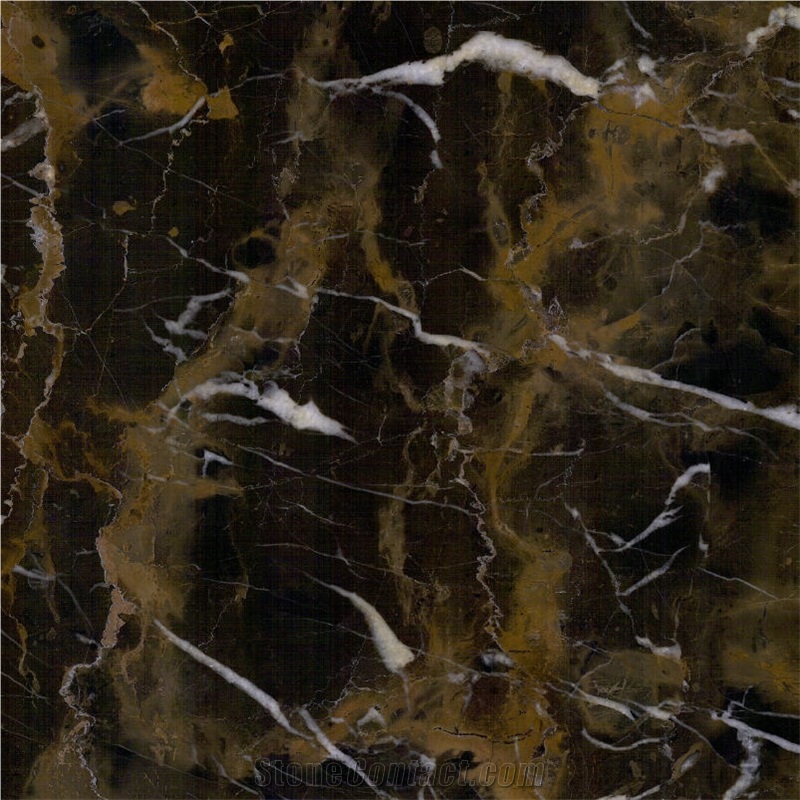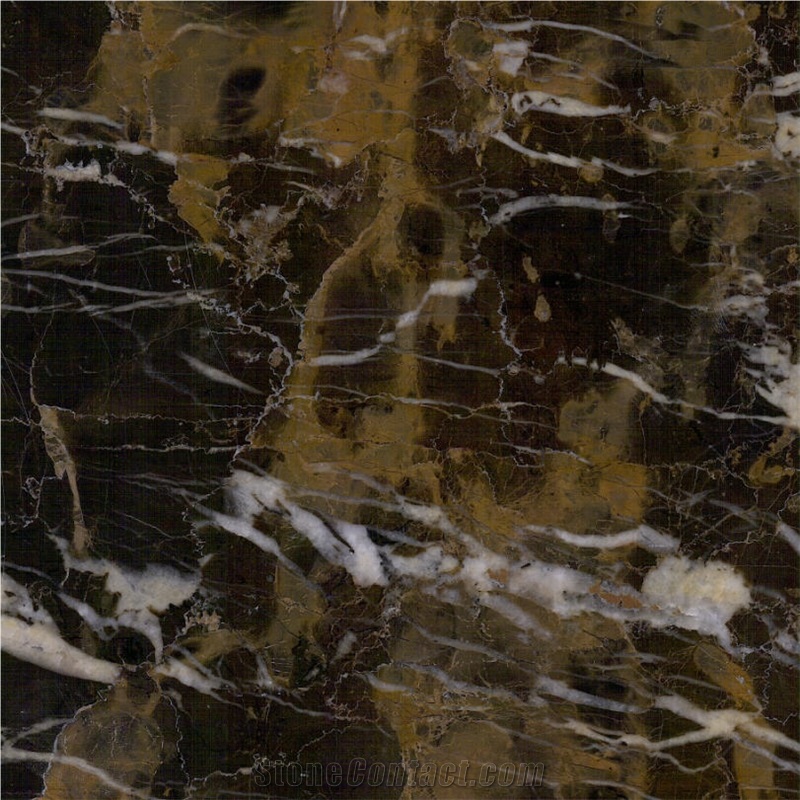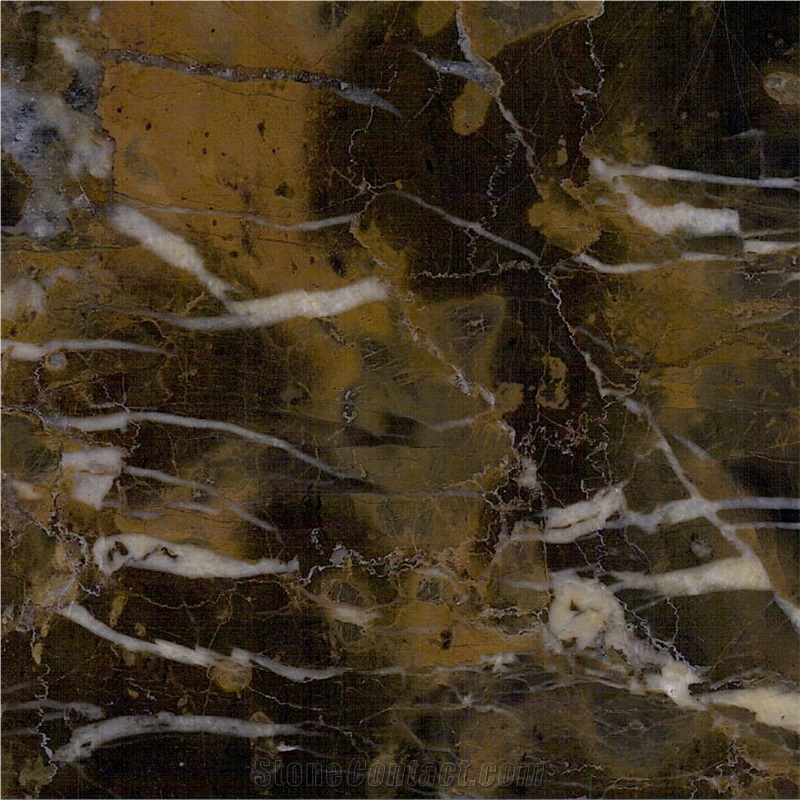Michaelangelo Marble
 Pakistan
(Balochistan)
Pakistan
(Balochistan)
Michaelangelo Marble, also known as Black Gold Marble, is an exquisite natural stone renowned for its captivating beauty. This marble features a striking contrast between its dark, blackish-brown base and the intricate, wavy patterns of white and brown veining that run through it. The white and brown textures blend seamlessly, creating a stunning visual effect that resembles the strokes of an artist's brush.
Quarried primarily in Pakistan, specifically in the Balochistan region, Michaelangelo Marble is highly regarded for its unique appearance and luxurious appeal. It is often used in various architectural and interior design applications, including countertops, flooring, wall cladding, and decorative accents.
The name "Black Gold Marble" is fitting, as it alludes to the rich and opulent appearance of this marble. Its dramatic color palette and distinctive veining make it a sought-after choice for projects where elegance and sophistication are desired. The interplay between the dark background and the flowing patterns of white and brown adds a sense of movement and depth to any space, making Michaelangelo Marble a captivating choice for those seeking to make a statement with their design choices.

Can Pakistan's Michaelangelo Marble be used exterior applications in cold climates?

How do I waterproof Michaelangelo Marble floor?

Can Pakistan's Michaelangelo Marble be used in a office?

What grade is Pakistan's Michaelangelo Marble?

Does olive oil stain Michaelangelo Marble?

Can I drill Michaelangelo Marble countertop myself?

How thick is Pakistan's Michaelangelo Marble slabs?

Can I seal Michaelangelo Marble countertop myself?

What is the coefficient of friction of Chiseled Pakistan's Michaelangelo Marble tiles?

Is Michaelangelo Marble a good countertop?

Is Michaelangelo Marble floor hard to maintain?

Is Michaelangelo Marble good for bathroom?

How do I know if my Michaelangelo Marble is sealed?

Does lemon juice stain Michaelangelo Marble countertop?

Does baking soda whiten Michaelangelo Marble?

Does water stain on Michaelangelo Marble countertop?

How do I protect Michaelangelo Marble kitchen countertop?

Does Michaelangelo Marble absorb heat?

What can I use to clean Michaelangelo Marble countertop?

Does Michaelangelo Marble countertop stain easily?

Is Michaelangelo Marble staircase durable?

Can Michaelangelo Marble terrace be waterproofed?

Is Pakistan's Michaelangelo Marble an expensive stone?

Can Pakistan's Michaelangelo Marble be used in landscaping?

What happens if I don't seal Michaelangelo Marble countertop?

Does Michaelangelo Marble floor need to be sealed?

Can Pakistan's Michaelangelo Marble be used outdoors?

Are there color variations of Pakistan's Michaelangelo Marble?

Does sealing Michaelangelo Marble make it shiny?

Does Michaelangelo Marble countertop scratch easily?

What makes Michaelangelo Marble sparkle?
-

 Pakistan
Pakistan
 10YRDiamond members are premium members on platform, providing members with comprehensive approach to promoting their products, increasing products exposure and investment return to maximize.
10YRDiamond members are premium members on platform, providing members with comprehensive approach to promoting their products, increasing products exposure and investment return to maximize.
Contact Supplier
-

-

 Pakistan
Pakistan
 10YRDiamond members are premium members on platform, providing members with comprehensive approach to promoting their products, increasing products exposure and investment return to maximize.
10YRDiamond members are premium members on platform, providing members with comprehensive approach to promoting their products, increasing products exposure and investment return to maximize.
Contact Supplier
-

 Pakistan
Pakistan
 10YRDiamond members are premium members on platform, providing members with comprehensive approach to promoting their products, increasing products exposure and investment return to maximize.
10YRDiamond members are premium members on platform, providing members with comprehensive approach to promoting their products, increasing products exposure and investment return to maximize.
Contact Supplier
-

 Pakistan
Pakistan
 10YRDiamond members are premium members on platform, providing members with comprehensive approach to promoting their products, increasing products exposure and investment return to maximize.
10YRDiamond members are premium members on platform, providing members with comprehensive approach to promoting their products, increasing products exposure and investment return to maximize.
Contact Supplier
-

 China
China
 4YRDiamond members are premium members on platform, providing members with comprehensive approach to promoting their products, increasing products exposure and investment return to maximize.
4YRDiamond members are premium members on platform, providing members with comprehensive approach to promoting their products, increasing products exposure and investment return to maximize.
 Verified Supplier is for prove company authenticity,including business license,trade license and effective office space,to enhance buyers' trust to suppliers and their products, reducing communication costs.
Verified Supplier is for prove company authenticity,including business license,trade license and effective office space,to enhance buyers' trust to suppliers and their products, reducing communication costs.
Contact Supplier
-

 Pakistan
Pakistan
 10YRDiamond members are premium members on platform, providing members with comprehensive approach to promoting their products, increasing products exposure and investment return to maximize.
10YRDiamond members are premium members on platform, providing members with comprehensive approach to promoting their products, increasing products exposure and investment return to maximize.
Contact Supplier
-

 Pakistan
Pakistan
 10YRDiamond members are premium members on platform, providing members with comprehensive approach to promoting their products, increasing products exposure and investment return to maximize.
10YRDiamond members are premium members on platform, providing members with comprehensive approach to promoting their products, increasing products exposure and investment return to maximize.
Contact Supplier
-

 Pakistan
Pakistan
 10YRDiamond members are premium members on platform, providing members with comprehensive approach to promoting their products, increasing products exposure and investment return to maximize.
10YRDiamond members are premium members on platform, providing members with comprehensive approach to promoting their products, increasing products exposure and investment return to maximize.
Contact Supplier
-

The request includes: 1. surface finished, size 2. quantity required






